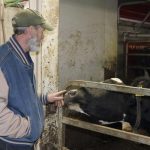Starbucks has two things going for it. Sustainability, for one, has always been part of the company’s DNA. Under Howard Schultz, Starbucks prioritized using renewable energy, invested in climate-resistant coffee trees and gave discounts to customers who brought their own reusable mugs, long before the plastic crisis, which really started only a few years ago. Kevin Johnson, Starbucks’ CEO since 2017, only invests in green bonds and options. The track record is there.
Also, Starbucks is known to sell products with higher price points than those of its competitors. Customers expect to pay more when visiting Starbucks. That will give Starbucks an edge, and help the chain absorb some of the extra costs. Demand at Starbucks is typically more elastic.
In other words, Starbucks customers are not as price sensitive as customers visiting other coffee shops. Tim Hortons’ makes a point of announcing price hikes on its menus every now and then. This doesn’t happen at Starbucks. Starbucks’ brand equity is second to none, and it charges for it, with no apologies.
Reaching these environmental goals won’t be easy for Starbucks. In fact, the chain’s stock price is down since the announcement. Maple Leaf Foods committed to becoming a carbon-neutral company just a few weeks ago. With some responsible accounting, Maple Leaf Foods can get it done without significantly tweaking its operations.
Starbucks, on the other hand, opted to go even further and commit to changing how its operations impact the environment. Instead of looking at the arithmetic of climate change, the Seattle-based giant is changing everything it does, from how it procures ingredients, to menu design, to how stores are managed on daily basis.
Starbucks’ bold move on sustainability points to the pressure the food service industry is under to save the planet, so to speak. For many consumers, especially the younger generations, politics have failed to provide an adequate response to the climate crisis. While governments face their electorates once every few years, food service providers face customers every day. And customers are expecting industry to step up.
But accountability will be key for companies making bold commitments. Companies are known to fail the market on sustainability. For example, Starbucks did promise it would be serving a quarter of its beverages in reusable containers by 2015. That promise was made in 2008. By 2016, only two per cent of all beverages were served in reusable containers. The public won’t be as forgiving this time, and will not hesitate to consider any half-hearted gas emission-reducing initiatives as greenwashing.


























